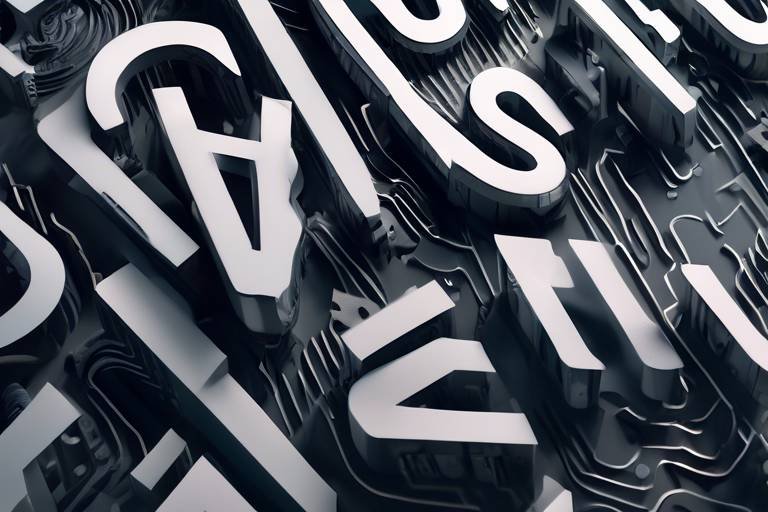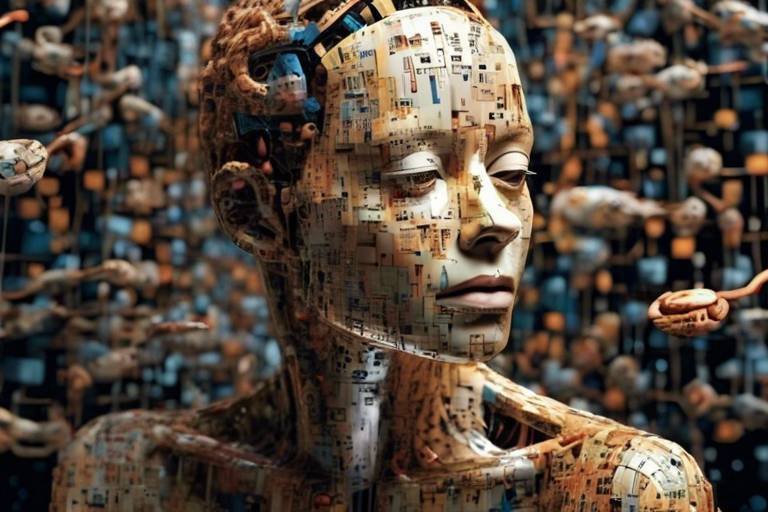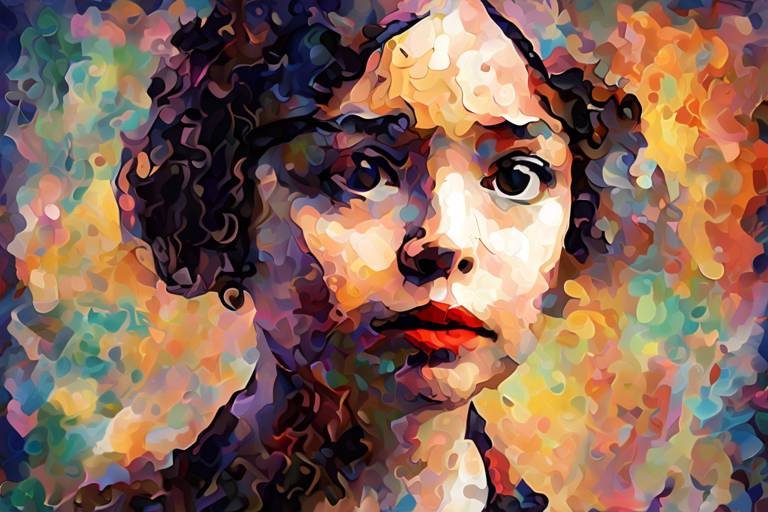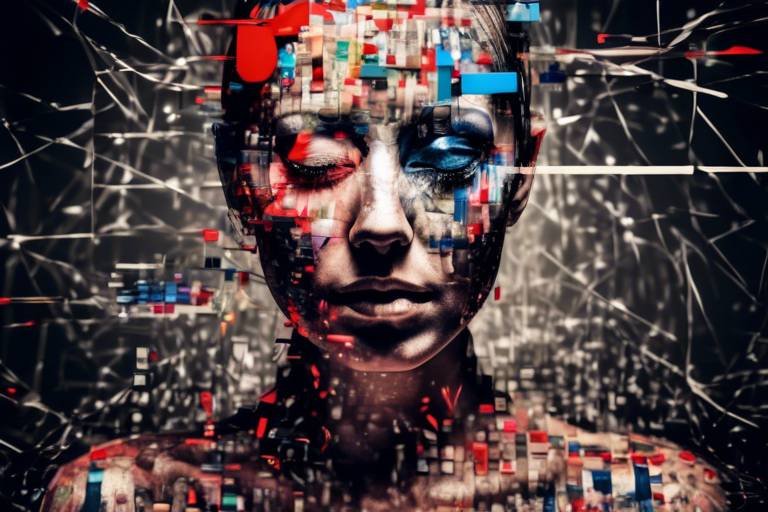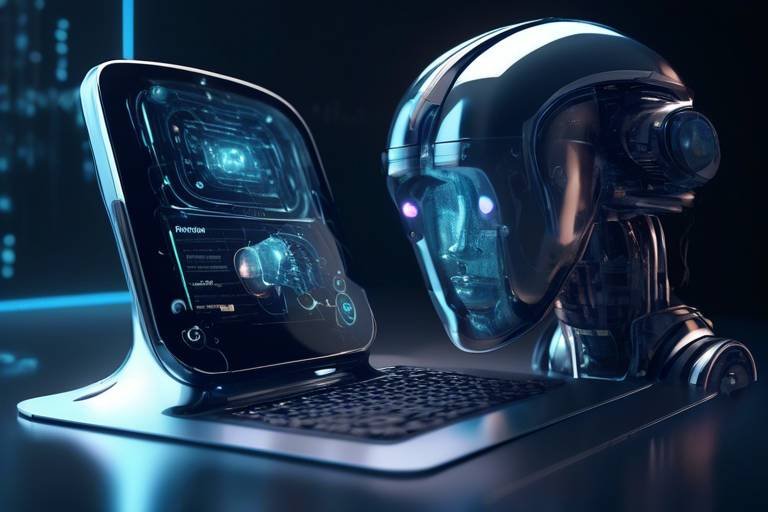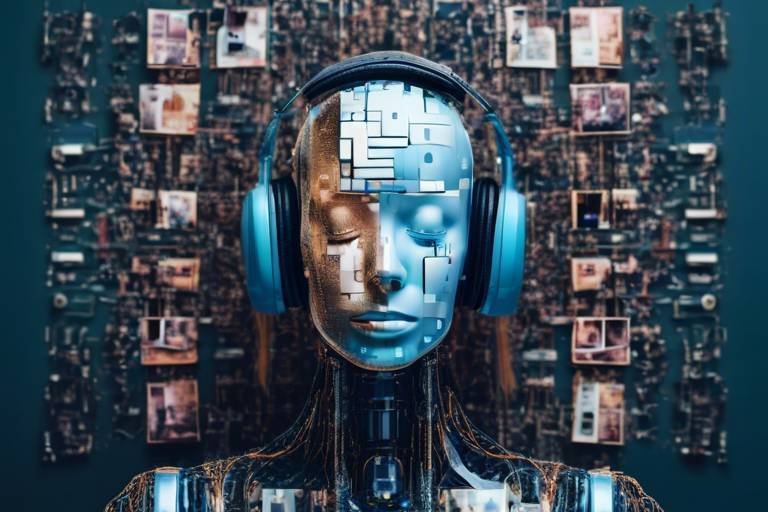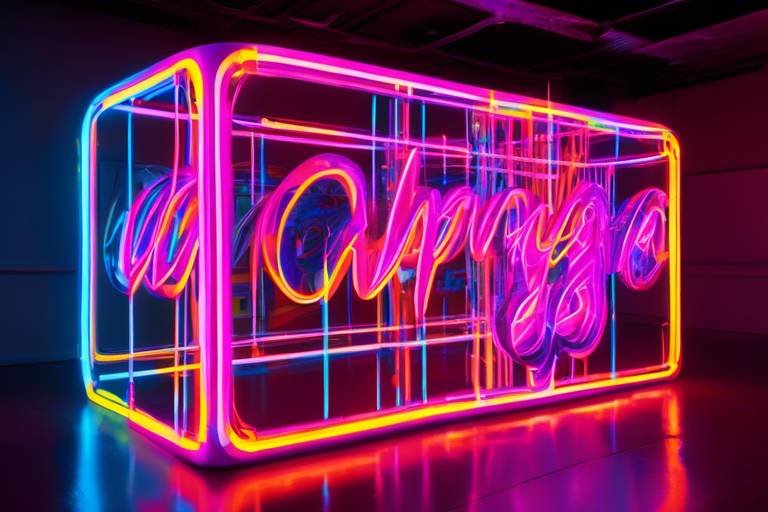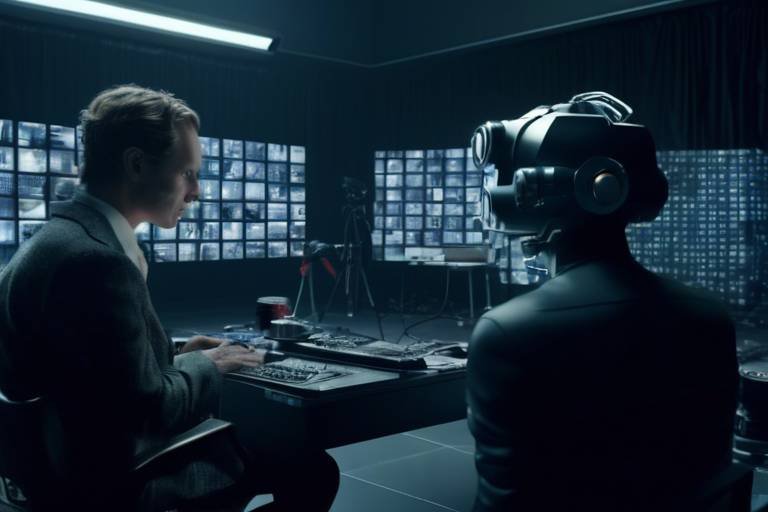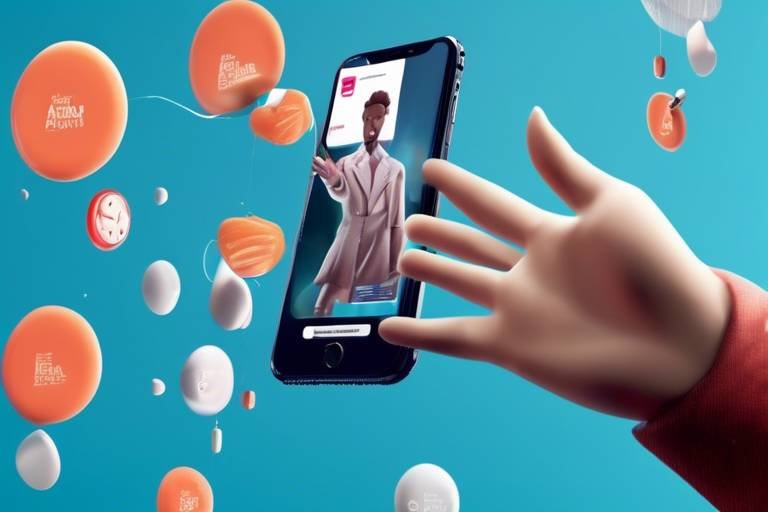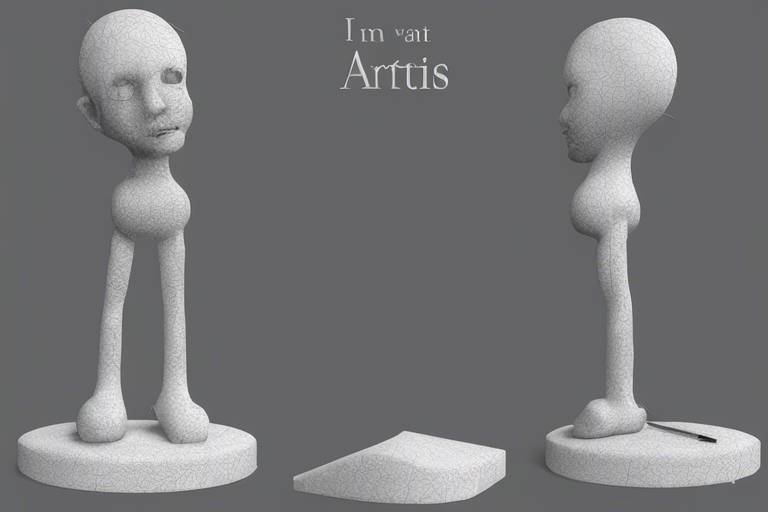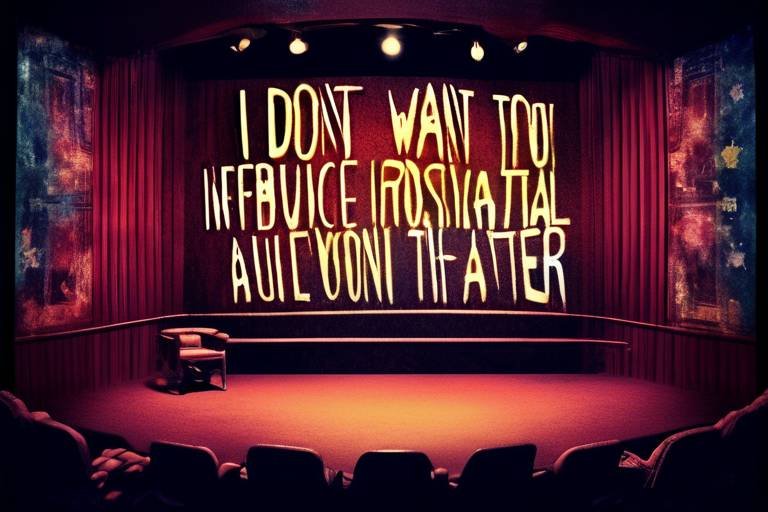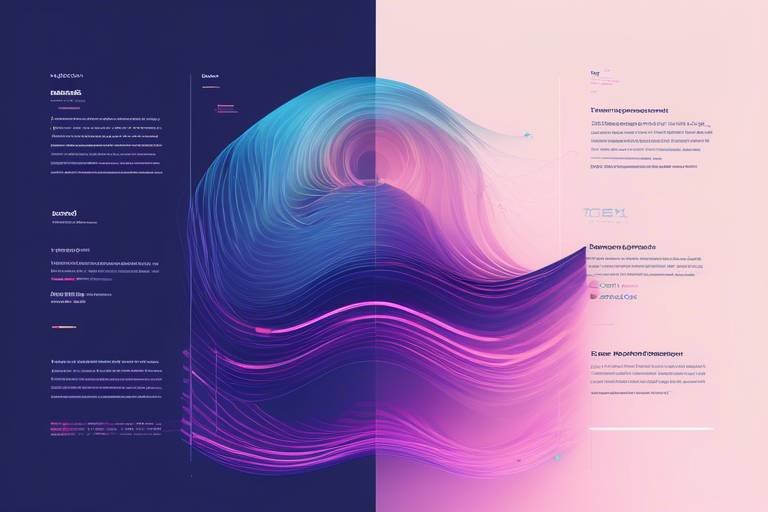The Emergence of AI in Contemporary Dance
In recent years, the world of contemporary dance has witnessed a remarkable transformation, propelled by the integration of artificial intelligence (AI). This fusion of technology and artistry is not just a passing trend; it represents a significant evolution in how we conceive, create, and experience dance. Imagine a world where choreographers collaborate with intelligent algorithms to craft movements that are not only innovative but also deeply resonant with audiences. This article explores the profound impact of AI on choreography, performance, and audience interaction, while also contemplating the exciting possibilities that lie ahead for this dynamic art form.
As we delve into this fascinating intersection of technology and dance, it becomes clear that the integration of AI is reshaping the landscape in ways we never thought possible. Traditional boundaries that once defined the art of dance are being challenged, allowing for innovative collaborations that push the limits of creativity. Dancers are no longer just performers; they are now co-creators with machines, engaging in a dialogue that enhances their artistic expression. This shift is not merely about using technology for the sake of novelty; it's about enriching the emotional depth and storytelling aspects of dance.
One of the most exciting developments in this realm is the emergence of AI-driven choreography. Choreographers can now harness the power of machine learning to analyze movement patterns, generating new sequences that reflect both human creativity and algorithmic precision. This synergy offers fresh perspectives, enabling artists to explore uncharted territories in their work. As we navigate through this article, we will examine various facets of AI's role in choreography, including algorithmic movement generation and notable case studies that exemplify successful collaborations.
However, it's important to acknowledge that while AI opens up a world of possibilities, it also presents challenges. Questions about creativity, authorship, and the emotional resonance of AI-generated movements are at the forefront of discussions in the dance community. As we explore these themes, we will consider how artists are grappling with these issues while striving to maintain the human essence of dance amidst the rise of technology.
Ultimately, the emergence of AI in contemporary dance is not just a technological advancement; it is a cultural shift that invites us to rethink what dance can be. As we look ahead, the future of this art form promises to be as dynamic and evolving as the dancers who embody it. Join us on this journey as we uncover the layers of AI's influence on contemporary dance, from choreography to audience engagement, and everything in between.
- How is AI used in choreography? AI analyzes movement patterns and suggests new sequences, allowing choreographers to explore innovative ideas.
- Can AI replace human dancers? While AI can assist in choreography, it cannot replicate the emotional expression and connection that human dancers bring to performances.
- What are the challenges of using AI in dance? Challenges include concerns about creativity, authorship, and the emotional depth of AI-generated movements.
- How does AI enhance audience engagement? AI enables interactive performances and personalized experiences, transforming audiences from passive viewers to active participants.

The Intersection of Technology and Dance
The world of contemporary dance is undergoing a remarkable transformation, thanks to the infusion of technology into its very fabric. As we witness the emergence of artificial intelligence (AI), the boundaries that once defined dance are being pushed further than ever before. Imagine a dancer moving gracefully across a stage, their movements not just choreographed by a human mind but also influenced and enhanced by algorithms that analyze every twist and turn. This fusion of art and science creates a dynamic interplay that challenges traditional notions of choreography and performance.
In this brave new world, technology serves as a collaborator rather than a mere tool. Choreographers are now able to explore an array of innovative collaborations that were previously unimaginable. For instance, dancers can engage with AI systems that not only respond to their movements but also generate real-time feedback, allowing for a fluid exchange between human creativity and machine learning. This relationship is akin to a dance partner who not only follows your lead but also introduces unexpected elements, keeping the performance fresh and exhilarating.
Moreover, the integration of AI into dance opens up new avenues for artistic expression. Dancers can experiment with interactive installations that utilize motion sensors and AI algorithms to create immersive environments. These installations invite audiences to step into the artwork, transforming them from passive spectators into active participants. Imagine walking into a space where your movements influence the visuals and sounds around you, creating a unique performance that evolves with each individual's interaction. This level of engagement not only enhances the audience's experience but also redefines the role of the viewer in the artistic process.
As technology continues to advance, the potential for future collaborations between dancers and AI is limitless. We are entering a phase where creativity knows no bounds, and the very essence of dance is being reimagined. The intersection of technology and dance is not just a trend; it is a profound evolution that promises to enrich the art form in ways we are only beginning to understand. With each step forward, we are reminded that dance is not merely a series of movements but a living, breathing entity that thrives on innovation and exploration.

AI-Driven Choreography
In the ever-evolving world of dance, artificial intelligence is emerging as a powerful ally for choreographers, revolutionizing the way movement is conceived and created. Imagine a scenario where a choreographer can collaborate with a machine that not only understands human movement but also suggests innovative sequences that push the boundaries of traditional dance. This is no longer a distant dream; it’s happening right now. AI is capable of analyzing vast amounts of data on movement patterns, allowing it to generate unique choreography that reflects a myriad of styles and influences.
One of the most exciting aspects of AI-driven choreography is its ability to provide choreographers with fresh perspectives. By utilizing machine learning algorithms, these systems can learn from existing dance forms and even adapt to the emotions or reactions of the audience in real time. This capability transforms the choreographic process from a solitary endeavor into a dynamic collaboration between human creativity and technological innovation. As a result, choreographers can experiment with new ideas and styles, leading to the creation of groundbreaking performances that captivate audiences.
At the heart of AI-driven choreography lies the concept of algorithmic movement generation. This process involves using algorithms to create dance sequences that are not only unique but also responsive to various stimuli. For instance, an AI system can analyze the rhythm of a piece of music and generate movements that sync perfectly with the beats, creating a harmonious blend of sound and motion. Furthermore, these algorithms can be programmed to respond to audience interactions, allowing for a truly immersive experience.
To illustrate this, consider a performance where dancers interact with an AI system that monitors the audience's reactions. As the audience becomes more engaged, the AI adjusts the choreography, introducing new elements that heighten the overall experience. This synergy between dancers and technology not only enhances the performance but also fosters a deeper connection between the audience and the art form.
Several notable projects have successfully integrated AI into choreography, showcasing the innovative outcomes that emerge from this collaboration. For example, the project "Deep Dance" utilized neural networks to analyze and generate dance sequences based on various dance styles. The results were astonishing, with dancers performing movements that were both intricate and expressive, all guided by AI suggestions. Another example is the collaboration between choreographer Wayne McGregor and Google Arts & Culture, which explored how AI could generate movement phrases that dancers could then interpret, leading to a fascinating interplay of human and machine creativity.
These case studies highlight the potential of AI to not only assist in the choreographic process but also to inspire new forms of artistic expression. As choreographers continue to explore this technology, we can expect to see even more groundbreaking works that challenge our perceptions of dance.
Despite the exciting possibilities, integrating AI into choreography is not without its challenges. One of the primary concerns revolves around creativity and authorship. When a machine generates a movement sequence, who truly owns that creation? Is it the choreographer who provided the initial input, or the AI that generated the final product? This question raises important ethical considerations in the world of dance and art at large.
Additionally, there are concerns about the emotional depth of AI-generated movements. While AI can analyze and replicate physical patterns, can it truly capture the essence of human emotion that is often conveyed through dance? Many believe that the emotional connection inherent in human choreography cannot be fully replicated by machines, leading to a debate about the role of AI in the creative process.
In conclusion, while AI-driven choreography presents exciting opportunities for innovation and exploration, it also poses significant questions about creativity, authorship, and emotional depth. As we navigate this new landscape, it is essential to strike a balance between embracing technological advancements and preserving the core essence of human expression in dance.
- What is AI-driven choreography?
AI-driven choreography refers to the use of artificial intelligence technologies to assist in the creation of dance sequences, allowing for innovative movement generation and enhanced creative processes. - How does AI analyze movement patterns?
AI analyzes movement patterns by processing large datasets of dance videos, identifying key movements, and using algorithms to replicate or generate new sequences based on learned data. - Can AI create emotional dance performances?
While AI can generate intricate movements, there is ongoing debate about whether it can truly replicate the emotional depth conveyed by human dancers. - What are the ethical concerns surrounding AI in dance?
Ethical concerns include questions of authorship, ownership of creative works, and the potential impact on traditional dance practices.

Algorithmic Movement Generation
The world of dance is constantly evolving, and at the forefront of this evolution is the fascinating realm of . Imagine a scenario where a dancer steps onto the stage, and instead of following a pre-defined choreography, their movements are influenced in real-time by an intelligent algorithm. This is not science fiction; this is the new reality made possible by advancements in artificial intelligence (AI). By leveraging machine learning, choreographers can now create dynamic and responsive dance sequences that adapt to various stimuli, including music, audience reactions, and even the dancers' own movements.
At its core, algorithmic movement generation utilizes complex mathematical models and data analysis to produce unique movement patterns. These algorithms can analyze vast amounts of data, including previous performances, movement styles, and even the physical capabilities of the dancers themselves. The result? A choreography that is not only innovative but also tailored to the specific context of each performance. This approach opens up a treasure trove of creative possibilities, allowing artists to explore new forms of expression that were previously unimaginable.
Consider the following aspects of algorithmic movement generation:
- Real-time Adaptability: Algorithms can respond to live inputs, enabling dancers to interact with the technology as they perform. This creates a dynamic interplay between human and machine, resulting in a unique experience for both the performers and the audience.
- Data-Driven Creativity: By analyzing historical data and movement patterns, AI can suggest new sequences that challenge traditional dance forms. This data-driven approach encourages choreographers to step outside their comfort zones and experiment with novel ideas.
- Enhanced Collaboration: Dancers can collaborate with AI systems to create hybrid performances that blend human artistry with machine precision. This partnership can lead to groundbreaking works that redefine the boundaries of contemporary dance.
One of the most exciting aspects of algorithmic movement generation is its potential to democratize choreography. With user-friendly software and applications becoming more accessible, aspiring choreographers can experiment with AI tools without needing extensive technical expertise. This opens the door for a new generation of artists who can harness the power of technology to bring their visions to life.
However, it’s essential to recognize that while algorithmic movement generation offers incredible opportunities, it also raises important questions about the nature of creativity and authorship in dance. Who owns the choreography created by an AI? Can a machine truly understand the emotional nuances of human movement? These questions are at the heart of ongoing discussions about the role of AI in creative fields.
In conclusion, algorithmic movement generation is not just a passing trend; it is a profound shift in how we understand and create dance. As choreographers embrace these new tools, they are not only expanding their artistic horizons but also inviting audiences to engage with dance in entirely new ways. The future of dance is indeed bright, and with AI as a collaborator, the possibilities are as limitless as the human imagination.

Case Studies of AI Choreography
As we delve into the fascinating world of AI in choreography, several remarkable case studies illustrate the transformative power of technology in contemporary dance. One standout example is the collaboration between Wayne McGregor, a renowned choreographer, and the tech company Google Arts & Culture. Together, they created a project called Living Archive, which utilized machine learning algorithms to analyze McGregor's extensive body of work. The result? An innovative tool that not only suggested new movement sequences but also provided insights into his unique choreographic style. This project showcased how AI can serve as a collaborator, enhancing the creative process rather than replacing the artist.
Another compelling case study comes from the dance group Hofesh Shechter Company, which explored the integration of AI with their performance titled Human. They employed a system that analyzed audience reactions in real-time, adjusting the performance dynamically based on the energy and engagement levels of the viewers. This interaction created a unique experience for each audience, transforming the traditional one-way performance into a vibrant dialogue between dancers and spectators. The dancers were not merely performing; they were responding to the audience, blurring the lines between artist and observer.
Furthermore, the project Deep Dance, initiated by a group of researchers and dancers, pushed the boundaries of AI choreography by using neural networks to generate entirely new dance movements. By training the AI on a diverse dataset of dance styles, the system produced innovative sequences that human choreographers had never conceived. This collaboration resulted in performances that were not only visually stunning but also challenged the dancers to adapt to unexpected movements, fostering a sense of spontaneity and exploration within the art form.
These case studies highlight the incredible potential of AI in choreography. They demonstrate that when artists and technologists collaborate, the outcomes can be groundbreaking. AI is not merely a tool; it can be a partner in the creative process, offering fresh perspectives and pushing the boundaries of what dance can be. However, it’s essential to remain mindful of the challenges that come with such integration, including questions of authorship and the emotional depth of AI-generated movements. As we continue to explore these partnerships, the future of dance looks not only innovative but also deeply connected to the evolving landscape of technology.
- What is AI choreography? AI choreography refers to the use of artificial intelligence technologies to create, enhance, or analyze dance movements and performances.
- How does AI influence traditional dance? AI introduces new creative tools and perspectives, allowing dancers and choreographers to explore movements and ideas that might not have been possible through traditional methods.
- Are AI-generated dance movements emotional? While AI can generate complex movements, the emotional depth often relies on human interpretation and performance, raising questions about the essence of dance.
- Can AI replace human choreographers? AI is a tool that can assist and inspire choreographers, but it is unlikely to fully replace the unique creativity and emotional expression that human artists bring to dance.

Challenges in AI Choreography
The integration of artificial intelligence into choreography is as exciting as it is complex. While AI can generate innovative movement patterns and provide fresh insights, it also brings a set of unique challenges that cannot be overlooked. One of the most pressing concerns is the question of creativity. Can a machine truly create art? This question lingers in the minds of many dancers and choreographers. After all, dance is not just about movement; it's about emotion, storytelling, and the human experience. AI, despite its capabilities, lacks the intrinsic emotional depth that a human artist brings to the table.
Another significant challenge revolves around authorship. When an AI system generates a dance piece, who holds the rights to that creation? Is it the programmer, the dancer, or the AI itself? This ambiguity can lead to legal and ethical dilemmas that the dance community is not fully prepared to navigate. Moreover, the dance world has long been rooted in tradition and individual expression, and the introduction of AI can feel like a disruption to those values.
Furthermore, there are concerns about the emotional resonance of AI-generated choreography. While machines can analyze data and replicate movements, they may struggle to convey the subtleties of human emotion that are often integral to a dance performance. This limitation can lead to a perception that AI choreography is cold or mechanical, lacking the warmth and connection that audiences crave.
Additionally, there is the issue of technical limitations. AI systems rely on vast amounts of data to learn and create, which means that their output is often only as good as the input they receive. If the training data is limited or biased, the resulting choreography may not reflect the diversity and richness of human dance traditions. This raises important questions about representation and inclusivity in AI-generated works.
To summarize, while AI presents exciting opportunities for contemporary dance, it also poses significant challenges that artists must consider. The balance between embracing technological advancements and preserving the core values of dance is a delicate one. As the dialogue between AI and dance continues, it is essential for the community to engage with these challenges thoughtfully and creatively.
- Can AI create original dance choreography? Yes, AI can generate original choreography by analyzing existing movement patterns and creating new sequences based on that data.
- Who owns the rights to AI-generated choreography? The ownership of AI-generated choreography is a complex issue, often depending on the laws of intellectual property and the specific agreements made between the creators and the technology used.
- How does AI affect the emotional quality of dance? While AI can replicate movements, it may struggle to convey the emotional depth and connection that human dancers bring to their performances.
- What are the limitations of AI in choreography? AI relies on data for learning, which means that its output can be limited by the quality and diversity of the input data it receives.

Enhancing Performance with AI
In the ever-evolving world of contemporary dance, the integration of artificial intelligence (AI) is not just a trend; it's a transformative force that is redefining how performances are conceived and experienced. Imagine a stage where dancers are not just performers but also collaborators with intelligent systems that respond to their movements in real-time. This synergy creates an electrifying atmosphere, captivating audiences and pushing the boundaries of what dance can be.
One of the most exciting aspects of AI-enhanced performances is the ability to create immersive experiences. Dancers can interact with AI systems that analyze their movements and adjust the accompanying visuals or soundscapes accordingly. For instance, an AI could detect the tempo of a dancer's movements and alter the music's rhythm to match, creating a seamless blend of choreography and technology. This dynamic interaction not only heightens the emotional impact of the performance but also invites the audience to engage on a deeper level.
Moreover, AI technologies can facilitate real-time feedback during performances. Imagine a scenario where a dancer receives instant visual cues based on their movements, allowing them to adjust their performance on the fly. This capability can lead to a more fluid and responsive dance experience, where the boundaries between the dancer and the audience blur. The audience witnesses a living, breathing performance that evolves with each passing moment, making every show a unique event.
To illustrate the potential of AI in enhancing performance, consider the following table that outlines some key technologies currently being utilized:
| Technology | Description | Impact on Performance |
|---|---|---|
| Motion Capture | Tracks dancers' movements in real-time. | Enables precise interaction with digital elements. |
| Generative Algorithms | Creates visuals or soundscapes based on movement patterns. | Enhances the immersive quality of performances. |
| AI-Driven Lighting | Adjusts lighting based on the dancers' positions and movements. | Creates a more engaging visual environment. |
As we delve deeper into the realm of AI-enhanced performances, we must also acknowledge the potential challenges. While AI can enrich the dance experience, it raises questions about the authenticity of the performance. Can a dance still be considered genuine if it is significantly influenced by an algorithm? This debate is crucial as artists navigate the fine line between technology and artistry. Nevertheless, the potential for AI to enhance performance is immense, and it opens up a world of possibilities for both dancers and audiences alike.
In conclusion, the incorporation of AI into live performances is not merely about adding a layer of technology; it's about creating a new language of expression that resonates with audiences in profound ways. As we continue to explore this intersection of art and technology, we can only imagine the breathtaking performances that lie ahead.
- How does AI enhance live performances in dance? AI enhances live performances by allowing real-time interaction between dancers and technology, creating immersive and dynamic experiences.
- What are some technologies used in AI-enhanced dance? Technologies such as motion capture, generative algorithms, and AI-driven lighting are commonly used to enhance performances.
- Are there challenges associated with AI in dance? Yes, challenges include concerns about authenticity, creativity, and the emotional depth of AI-generated movements.

Audience Engagement through AI
The integration of artificial intelligence (AI) in contemporary dance is not just transforming the way performances are created; it's also revolutionizing how audiences engage with these art forms. Imagine attending a dance show where the choreography adapts in real-time based on the audience's reactions. This is no longer a distant dream but a tangible reality thanks to AI technologies that enable dynamic interaction between dancers and viewers. As audiences become more involved, the traditional boundaries separating performer and spectator begin to blur, fostering a deeper connection to the art.
One of the most exciting aspects of AI-driven performances is the potential for personalized experiences. With the help of AI algorithms, performances can be tailored to reflect the preferences and emotions of the audience. For instance, if the audience's energy peaks during a particular segment, the AI can adjust the choreography, lighting, or even the music to amplify that moment, creating a unique experience for everyone present. This level of interactivity not only captivates the audience but also makes them feel like they are a part of the performance, rather than just passive observers.
Moreover, AI can facilitate interactive installations that invite audience participation. These installations often use sensors and cameras to track audience movements and reactions, allowing the dancers to respond in real-time. This creates an immersive environment where the audience's presence actively shapes the performance. For example, a dance piece might change its rhythm or style based on how the audience moves or reacts, making each performance a one-of-a-kind event. Such experiences challenge the conventional notion of performance and redefine what it means to engage with art.
To illustrate the impact of AI on audience engagement, consider the following table that highlights key features of AI-enhanced performances:
| Feature | Description |
|---|---|
| Real-Time Interaction | Dancers can modify their movements based on audience reactions, creating a responsive performance. |
| Personalization | AI tailors the experience based on audience preferences, ensuring a unique show for each group. |
| Immersive Installations | Interactive environments that allow the audience to influence the choreography and ambiance. |
| Data-Driven Insights | Analyzing audience behavior to enhance future performances and engagement strategies. |
As we look towards the future, the possibilities for audience engagement through AI in dance are boundless. The technology continues to evolve, and with it, the potential for creating even more captivating and interactive experiences. Imagine a world where audiences can influence the narrative of a dance piece or where their emotional responses are fed back into the performance, creating a symbiotic relationship between art and viewer.
In conclusion, AI is not just a tool for enhancing choreography; it is a catalyst for redefining the entire experience of dance. By fostering deeper connections between performers and audiences, AI opens up new avenues for creativity and expression, making contemporary dance more accessible and engaging than ever before. As these technologies develop, we can expect to see even more innovative ways to captivate and involve audiences, ensuring that the art of dance remains a vibrant and evolving form of expression.
- How does AI enhance audience engagement in dance performances? AI allows for real-time interaction, enabling performances to adapt based on audience reactions, creating a more immersive experience.
- What are interactive installations in dance? These are environments where audience movements are tracked, allowing dancers to respond dynamically, transforming the audience from passive viewers to active participants.
- Can AI personalize dance performances? Yes, AI can analyze audience preferences and emotions to tailor the performance, ensuring a unique experience for each audience.
- What is the future of AI in contemporary dance? The future holds endless possibilities for AI in dance, including more sophisticated interactivity, enhanced audience experiences, and innovative choreography.

Interactive Installations
Imagine walking into an art space where the walls respond to your movements, creating a symphony of light and sound that dances alongside you. represent a thrilling frontier in contemporary dance, merging the physicality of movement with the limitless potential of technology. In these immersive environments, the audience is no longer a passive observer but an integral part of the performance, shaping the experience through their actions and reactions.
These installations often utilize artificial intelligence to analyze audience movements and adjust the performance in real-time. For instance, a dancer might leap into the air, triggering a cascade of colors and sounds that mimic their motion. This creates a dialogue between the performer and the audience, where every step taken can lead to a new visual or auditory experience. The result? A mesmerizing blend of art and technology that captivates the senses and invites personal interpretation.
One notable example of this phenomenon is the installation titled “Dancing with the Machine”, where visitors are encouraged to interact with a digital projection that reacts to their movements. As participants sway, twirl, or even stand still, the installation evolves, creating a unique performance that is different every time. This not only enhances the audience's connection to the art but also challenges traditional notions of authorship in dance. Who is the true creator—the dancer, the audience, or the AI?
Furthermore, these interactive experiences can take various forms, including:
- Augmented Reality (AR): Where dancers perform alongside digital elements visible through smartphones or AR glasses.
- Motion Sensors: Devices that track audience movements, allowing them to influence the choreography or visual elements.
- Soundscapes: Interactive audio environments that change based on the audience's presence and actions.
But it’s not just about the technology; it’s about creating a sense of community and shared experience. These installations often foster connections among participants, as they navigate the space together, responding to each other’s movements and the evolving environment. It’s akin to a dance party where everyone is both a dancer and a spectator, forging a collective memory that resonates beyond the performance itself.
As we look to the future, the potential for interactive installations in contemporary dance is boundless. With advancements in AI and motion tracking technology, the possibilities for creating engaging, personalized experiences will continue to expand. Imagine a world where every dance performance is uniquely tailored to its audience, where the line between performer and spectator blurs, and where art becomes a living, breathing entity shaped by human interaction. This is not just the future of dance; it’s the future of art itself.
Q: What are interactive installations in contemporary dance?
A: Interactive installations are art experiences where the audience can engage and influence the performance through their movements, often using technology like AI and motion sensors.
Q: How does AI enhance interactive installations?
A: AI analyzes audience movements and adjusts the performance in real-time, creating a dynamic and personalized experience that evolves with each interaction.
Q: Can anyone participate in these installations?
A: Yes! Interactive installations are designed to be inclusive, inviting all audience members to engage and contribute to the performance.
Q: What is the future of interactive installations in dance?
A: The future is bright, with advancements in technology likely to create even more immersive and personalized experiences, further blurring the lines between performer and audience.

Future Trends in AI and Dance
As we gaze into the future of AI and contemporary dance, it’s hard not to feel a sense of excitement and anticipation. The integration of artificial intelligence is not merely a passing trend; it is poised to redefine the very essence of dance as we know it. Imagine a world where dancers collaborate with intelligent systems that can not only analyze movements but also suggest innovative choreography in real-time. This dynamic partnership could lead to an explosion of creativity, pushing the boundaries of what is possible in performance art.
One of the most thrilling prospects is the potential for personalized performances. With advancements in AI, it’s conceivable that performances could be tailored to the preferences and emotional responses of individual audience members. For instance, an AI system could analyze audience reactions through facial recognition and adapt the choreography on the fly, creating a unique experience for everyone in attendance. This level of interactivity would transform the audience from mere spectators into active participants, fostering a deeper connection with the art form.
Moreover, as machine learning algorithms continue to evolve, we can expect to see AI-driven creative tools that assist choreographers in ways we can only dream of today. These tools could analyze vast databases of movement styles and cultural dance forms, offering choreographers a rich tapestry of inspiration from which to draw. This could lead to a new era of cross-cultural collaborations, where dancers from different backgrounds come together to create hybrid forms of dance that celebrate diversity and innovation.
But it’s not just about choreography and performance; the future of AI in dance also holds promise for enhancing the educational landscape. Imagine dance schools equipped with AI tutors that provide personalized feedback to students, helping them refine their technique and explore new styles. This could democratize dance education, making high-quality training accessible to a broader audience, regardless of geographical location or economic status.
As we look further ahead, we can also anticipate the development of immersive technologies such as virtual reality (VR) and augmented reality (AR) that will revolutionize the way we experience dance. Picture a scenario where audiences can step into a virtual world where they can interact with dancers and the choreography itself. This would not only enhance the sensory experience but also enable people to explore dance in ways that are currently unimaginable.
However, amidst all this excitement, it’s essential to consider the ethical implications of integrating AI into dance. Questions around authorship and the emotional depth of AI-generated movements will need to be addressed. Can a machine truly understand the nuances of human expression? As we embrace these technologies, it’s crucial to maintain a dialogue about the role of the human touch in artistic creation.
In summary, the future of AI in dance is bright and full of possibilities. From personalized performances to innovative educational tools, the potential for creativity is limitless. As we continue to explore this intersection of technology and art, we must remain mindful of the challenges and ethical considerations that accompany such advancements. The journey ahead promises to be an exhilarating one, reshaping the landscape of contemporary dance for generations to come.
- How is AI currently being used in contemporary dance?
AI is being utilized for choreography generation, performance enhancement, and audience engagement, allowing for innovative interactions and creative expressions. - What are the benefits of using AI in dance?
AI provides fresh perspectives for choreographers, enhances live performances, and creates personalized experiences for audiences, fostering deeper connections with the art form. - Are there any challenges associated with AI in dance?
Yes, challenges include concerns about creativity, authorship, and the emotional depth of AI-generated movements, which raises important ethical questions. - What future trends can we expect in AI and dance?
Future trends may include personalized performances, immersive technologies like VR and AR, and AI-driven educational tools that democratize dance training.
Frequently Asked Questions
- What is the role of AI in contemporary dance?
AI plays a transformative role in contemporary dance by assisting choreographers in creating innovative movement sequences and enhancing live performances. It allows for the analysis of movement patterns and the generation of new choreography that can respond to various stimuli, ultimately pushing the boundaries of traditional dance.
- How does AI-driven choreography work?
AI-driven choreography utilizes algorithms and machine learning to analyze existing dance movements and generate unique sequences. By processing vast amounts of data, AI can create choreography that adapts to different inputs, including music, audience reactions, and environmental factors, providing choreographers with fresh perspectives.
- Can AI replace human choreographers?
While AI can generate movement sequences and assist in the creative process, it is not a replacement for human choreographers. The emotional depth, creativity, and unique vision that human artists bring to choreography are irreplaceable. AI serves as a tool that can enhance the creative process rather than replace it.
- What challenges does AI face in choreography?
AI faces several challenges in choreography, including concerns about creativity, authorship, and the emotional connection of AI-generated movements. There is ongoing debate about whether AI can truly understand or replicate the nuances of human expression, which is a vital component of dance.
- How does AI enhance audience engagement in dance performances?
AI enhances audience engagement by creating interactive performances that allow spectators to participate actively. Through technologies that respond to audience input, such as movement and sound, performances become immersive experiences, transforming passive viewers into engaged participants.
- What are some examples of AI in dance installations?
Examples of AI in dance installations include interactive environments where audience movements influence the choreography or visuals. These installations invite participants to engage with the art form in real-time, creating a dynamic and personalized experience that evolves with their actions.
- What future trends can we expect in AI and contemporary dance?
Future trends in AI and contemporary dance may include more sophisticated algorithms that enable deeper emotional connections in performances, enhanced audience interactivity, and the blending of virtual reality with live dance. As technology continues to evolve, we can expect even more innovative collaborations between artists and AI.



